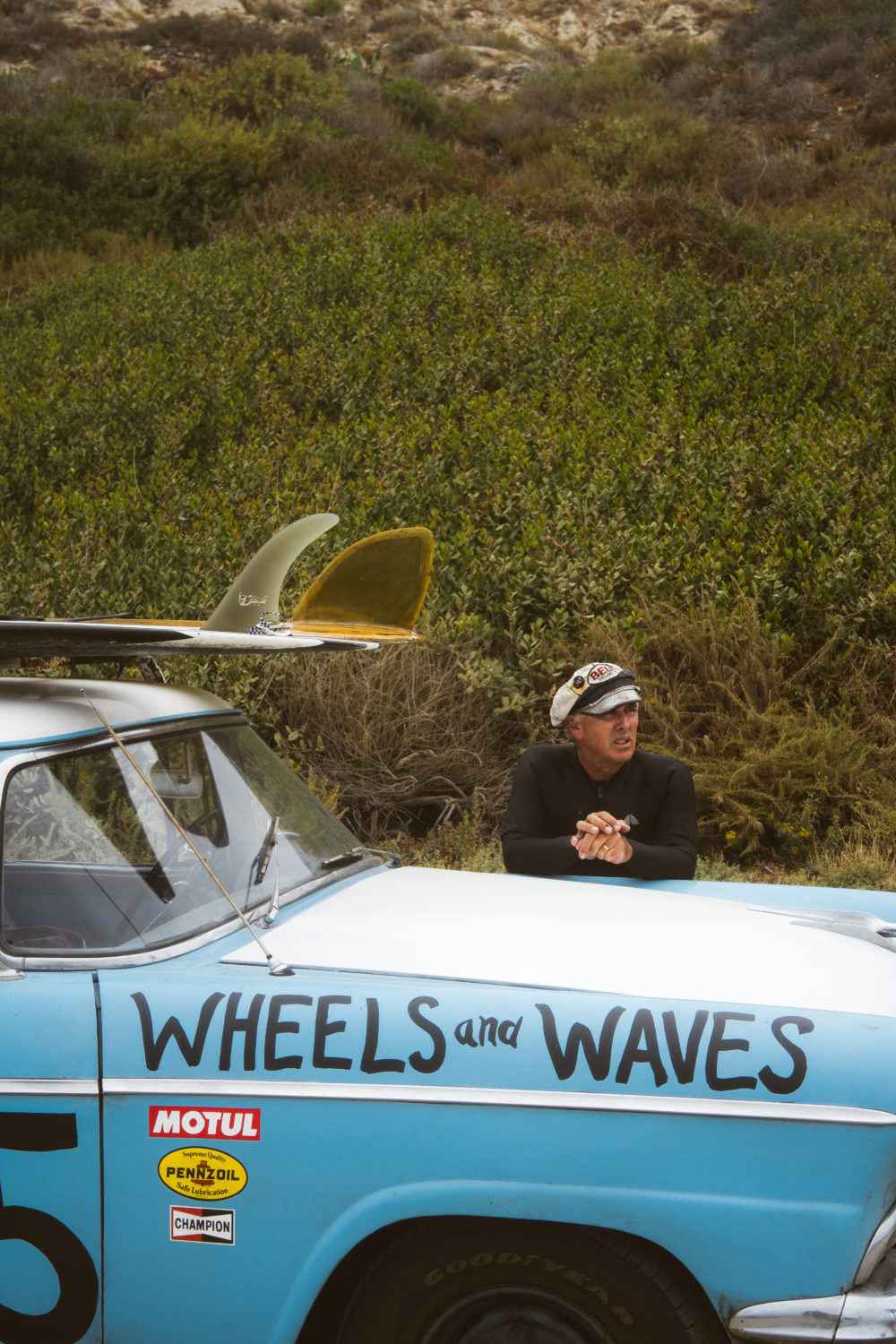Take one step inside artist Brian Bent’s studio and you’ll feel as if you were transported into a scene of The Endless Summer. Surfboards, WWII era hot rods, and vintage magazines clutter the space — making the studio the perfect combination of controlled chaos and 60s nostalgia.
Bent has become somewhat of a legend across the Southern California surf community, building vintage speedsters from scratch and ripping in the water on one of his 30s style “kook boxes.” Surf, art, cars, and music transcends every part of his life, and anyone who has the pleasure of meeting Bent will automatically feel the utter passion he exudes into his crafts.
We had the opportunity to spend the day with Bent and step into a day-in-the-life of the San Juan Capistrano native’s alluring California lifestyle.

Q & A with Brian Bent
EB: Tell us a little about yourself. How did you get your start in the art scene?
BB: I’ve been doing art for as long as I can remember and I’ve been into skating, surfing, and creating atmosphere ever since I was young. I started working for a surf and skate shop drawing on skateboards and playing music. Then worked for a chain of surf shops along the coast from Malibu to Encinitas, doing their art in store interiors for about 20 years.
EB: Tell us about your relationships with these shops and how it helped you showcase your work?
BB: I first started painting graphics on skateboards in the 80s. When I came back in 1990, I started doing the interior displays and then I started adding art to it and rocking it out. It just so happens that [the previous artist] was phasing out and I was phasing in and they really liked what I was doing. To make a long story short, over the years we ended up having six stores and I would do all of the “artistic maintenance” where I was doing all of the design, art, fixtures, and merchandising. Basically I was in charge of the whole look and feel of the store.
EB: How did being born and raised in Southern California influence your craft, whether it be in art, music, or surfing?
BB: I come from a family of hot rodders and surfers so I would just hit up record shops and I was kind of into the past. A lot of rockabilly revival in the 80s and so I was totally inspired by that. I mean I would be duck diving with a full hair pomp… you know like Brian Setzer… under a wave, having Dippity-Do and Aqua net burning my eyes.
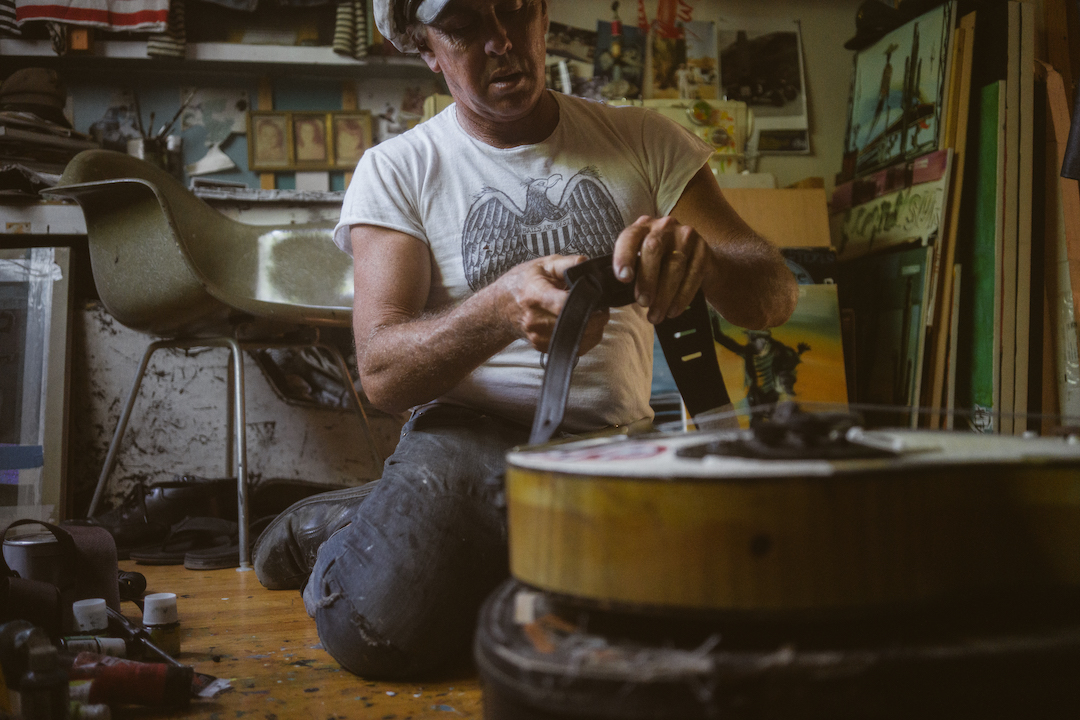
EB: How did you get your start in music?
BB: We started an instrumental band in the mid to late 80s. I started singing because I would mix the surf chords… like the Surfaris “I’m a Hog for You”… and it would just develop into surf music with a mix of rockabilly. I started playing a Dick Dale record, Surfers’ Choice, and it had just a bunch of driving, pretty rocking songs on it. It was just something from that era that just rocked out. It was really loose, really impactful, really simple, and so I totally gravitated to it and made it my own sound.
EB: Who do you draw influence from musically?
BB: Dick Dale, The Cramps… I liked X with Billy Zoom. Some punk bands and surf bands. Then Morrissey came out with Viva Hate and that was crazy because it was super majestic and kind of European. Morrissey was very poetic, it was nothing like anything I’d ever heard. But I generally draw from that early 60s, late 50s kind of sound.
EB: You build hot rods from scratch. How did you learn to do this?
BB: This car club called The Aces thought we should build a mascot for the Hot Rod Church for Sinners, which was a non-denominational church at a pizza restaurant and bar my buddy and his father owned. So they showed me how to build my first hot rod and then I totally got into them after that. They evoked the same feeling for me you would get from surfing or skateboarding: open cockpit and total racers.

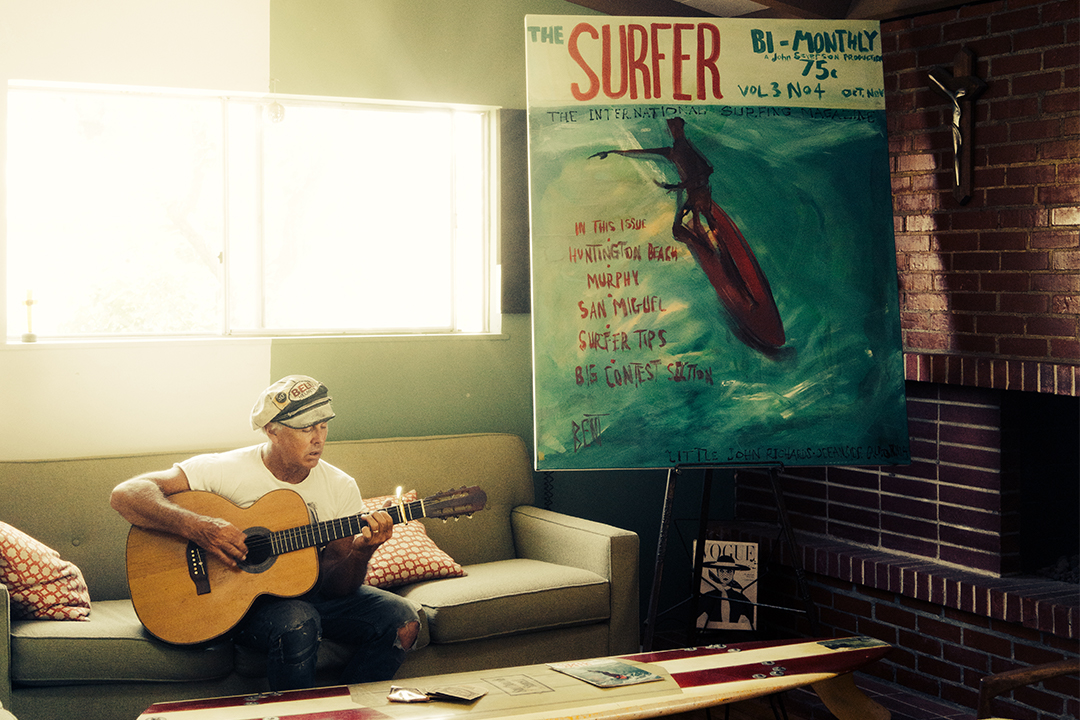
It’s quick, to the point, and it’s meant to make an impact.
Brian Bent on his artistic style.
EB: You’re known for your paintings of vintage Surfer Magazine covers. What was your inspiration behind this project?
BB: I prayed for inspiration one time and I had just finished painting a car with a friend for Uppercut Deluxe, the hair grease company, and the next day I got inspired to paint covers of Surfer Magazine… all of the early 60s magazines I had collected since the 80s. It was sort of similar to Andy Warhols ‘soup can.’
EB: You have photos of yourself rocking Ernie Ball gear from decades ago. What was your relationship with Ernie Ball growing up?
BB: I’ve been using Ernie Ball since the 80s. Ernie Balls were available at Guitar Center in singles and I knew Dick Dale was stringing with super thick gauges so I’d string together those thick gauges I’d find in the bins. Then from there I made the switch to Regular Slinkys and I’ve been playing Regular Slinkys since 1990.
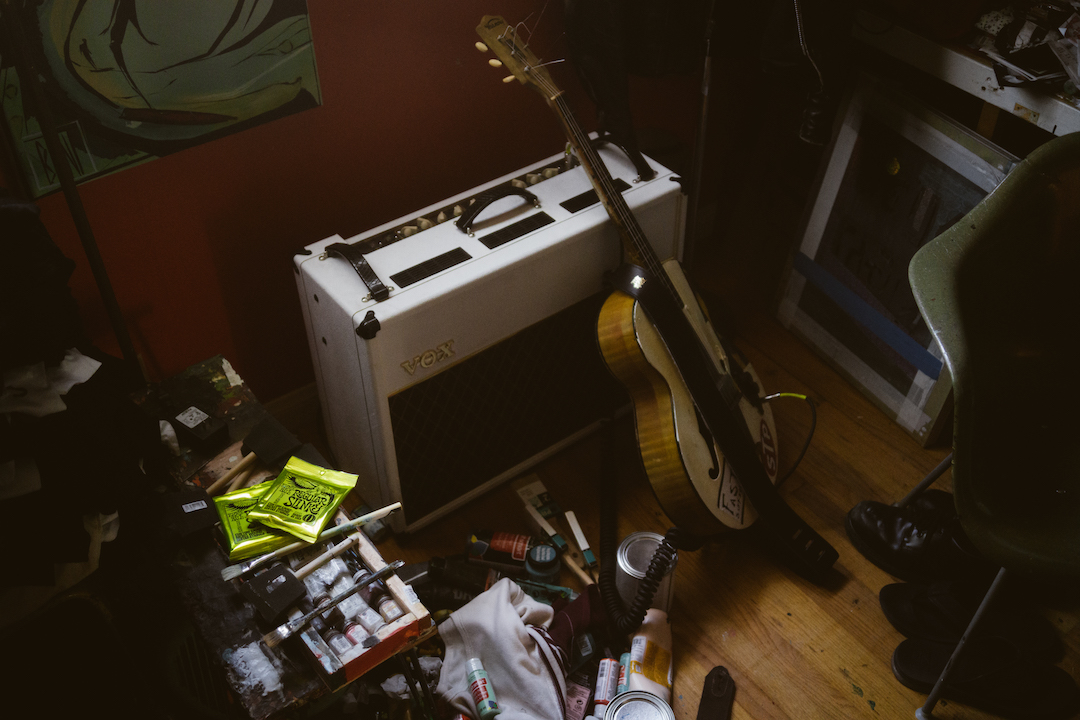
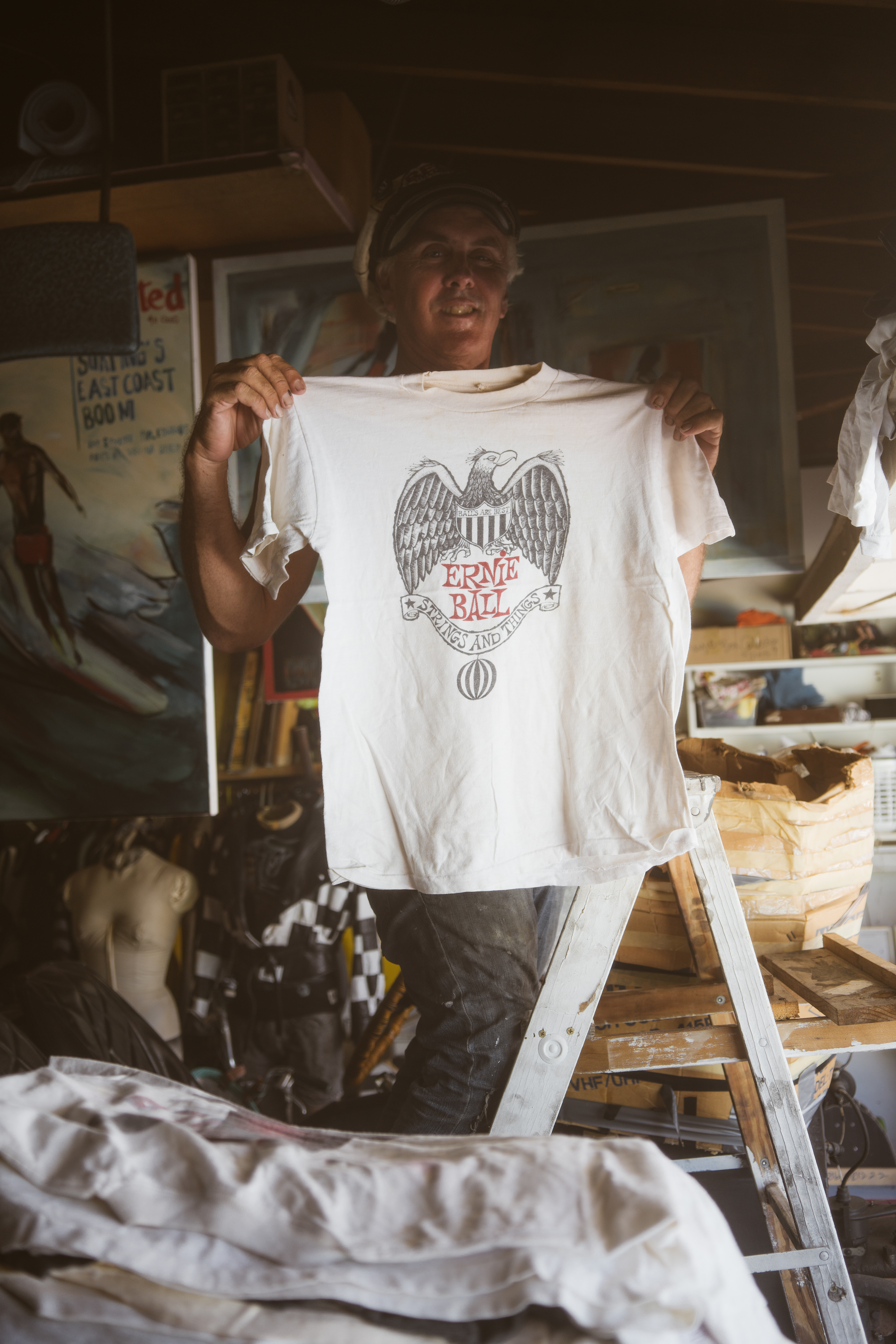
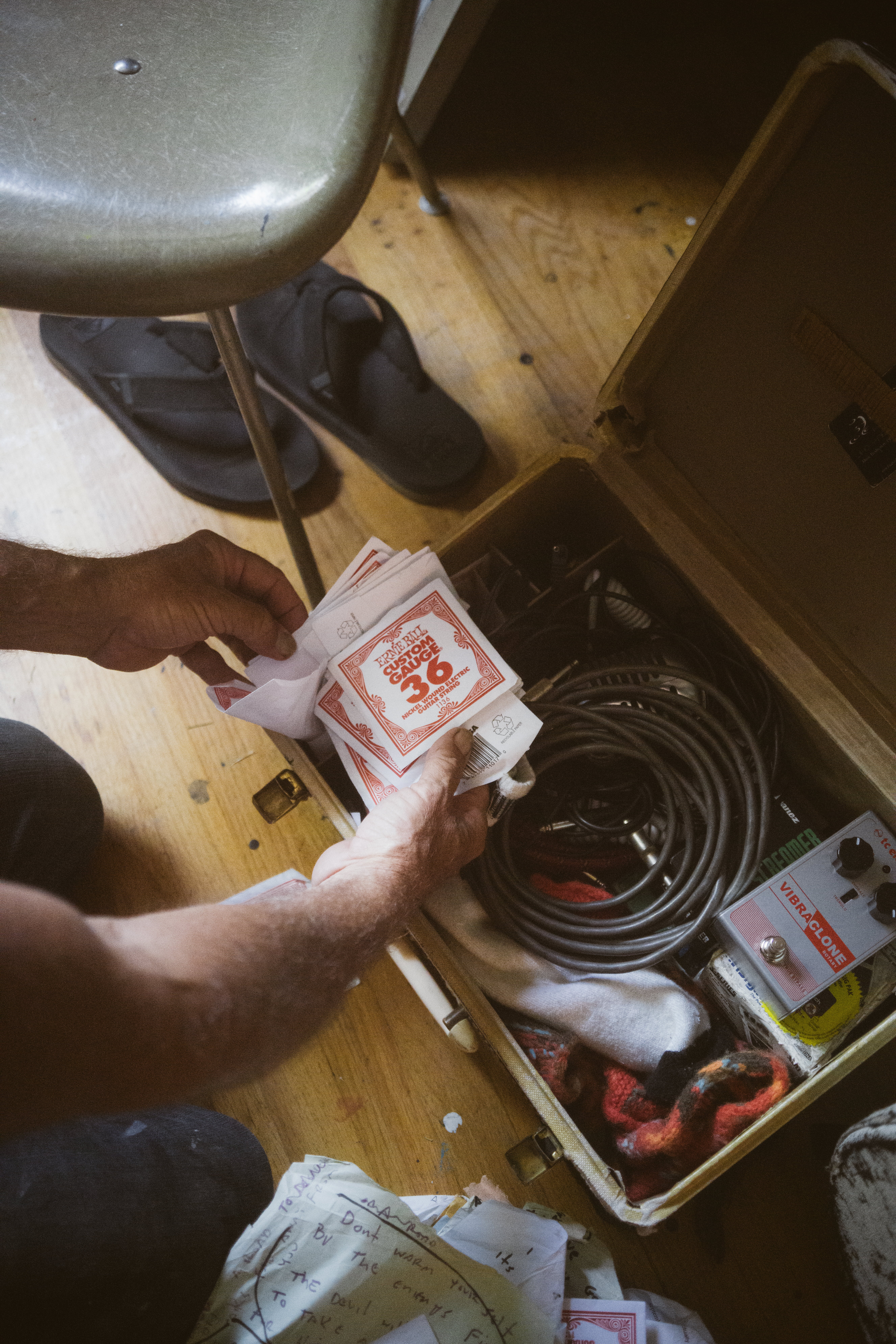
EB: How would you describe your artistic style?
BB: It’s quick, to the point, and it’s meant to make an impact. Working on a set, for example, I couldn’t take a ton of time, so I had to work diligently and let it flow. I would spend time on it, but not a ton of time, so it sort of developed into its own style. And that style is what helped me get picked up by galleries.
EB: Surfing is a big part of your life. Tell us about the first time you encountered a “kook box”?
BB: I love the 30s era, so I was super taken by it. My buddy brought one out one day at the beach and I was like, ‘What is that?’ And he told me it was a kook box. It was made out of wood, very minimal, and I just took to it. I eventually learned how to ride one and just stuck to them. I called it “old speed,” kind of like the motors in the hot rods. You feel like you’re going a lot faster than you actually are because the equipment is so much older and simplified. Like if you play an old guitar it has a cool sound that makes up for the action.

EB: Any upcoming projects we should look out for?
BB: I want to build a hot curl, which is another Hawaii-style, really fast board that rides really high on the waves.
EB: What is one piece of advice you would give to someone looking to jump start their career, whether it be in art and/or music?
BB: Stay loose and innovative. Do a really good job with what you’ve got and whatever you do, but also be open to doing new stuff. Experiment with your inspirations.
Gear
Brian Bent relies on Regular Slinky for his rockabilly, surf sound.



